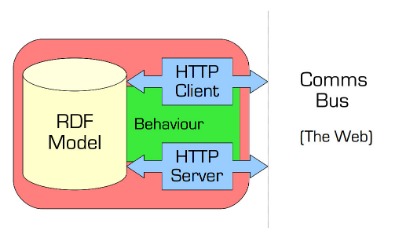Knowledge Hyperlink Layer Of Osi Reference Model
Data link layer is responsible for changing data stream to indicators little by little and to ship that over the underlying hardware. At the receiving finish, Data hyperlink layer picks up data from hardware that are in the type of electrical indicators, assembles them in a recognizable body format, and hands over to upper layer. The TCP/IP mannequin just isn’t a high-down complete design reference for networks.
For instance, each the hyperlink layer and the transport layer can provide dependable delivery. Although the mechanisms used to supply reliable supply within the two layers are comparable (see Section 3.4), the two dependable supply providers are not the same. A transport protocol supplies reliable supply between two processes on an end-to-end foundation; a reliable hyperlink-layer protocol supplies the reliable-supply service between two nodes connected by a single link.
Network Security
STP and RSTP are examples of protocols utilized by switches in this layer. They present the ability to make sure there is only one layer 2 path to get to a destination. PPP offers the power for a host to make a reference to a remote aspect utilizing a modem. L2TP permits a number to connect to a distant side using a secure connection. Layer 2 units that function at this level are switches and bridges. They work by guiding the site visitors to a destination primarily based on the MAC address.

The particulars of the info hyperlink layer could be specified in a different way and are mirrored in varied network varieties (Ethernet, token ring, and so forth.). Each network kind has its personal methodology of addressing, error detection, control of community move, and so forth. takes the packet from the community layer and breaks it into frames. The header in this layer offers the supply and destination MAC addresses.
In the ITU-T G.hn normal, which supplies a approach to create a excessive-velocity (as much as 1 Gigabit/s) local space network utilizing existing home wiring , the data hyperlink layer is divided into three sub-layers . The CAN information link layers distinguish between base frames (eleven-bit CAN-ID) and extended frames (29-bit CAN-ID). This is why they win bus-arbitration against prolonged frames with the very same first bit-pattern. In order to tell apart between Classical CAN and CAN FD frames, the r1 reserved bit is transmitted recessively in CAN FD frames. This signifies that legacy CAN controller chips destroy CAN FD communication.
Layer 2
The different is the media entry management sublayer which manages the transmission of knowledge between two gadgets. The community card on a PC has a MAC address, primarily a unique address for every device on an area area community. A link-layer protocol is used to move a datagram over a person link.
- More sophisticated error detection and correction algorithms are designed to reduce the danger that multiple transmission errors in the knowledge would cancel each other out and go undetected.
- The issue that arises in the data link layer is the way to maintain a fast transmitter from drowning a sluggish receiver in data.
- This can be completed by attaching special bit patterns to the start and finish of the body.
- A transport protocol provides reliable delivery between two processes on an finish-to-finish basis; a dependable link-layer protocol provides the reliable-supply service between two nodes connected by a single link.
- The second objective is to pretty and efficiently share communication resources between sensor nodes.
- Data-link layer takes packets from Network Layer and encapsulates them into Frames.Then, it sends every body bit-by-bit on the hardware.
The hyperlink-layer protocol defines the format of the packets exchanged between the nodes at the ends of the link, as well as the actions taken by these nodes when sending and receiving packets. Recall from Chapter 1 that the packets exchanged by a hyperlink-layer protocol are known as frames, and that every hyperlink-layer body typically encapsulates one community-layer datagram. As we will see shortly, the actions taken by a hyperlink-layer protocol when sending and receiving frames embody error detection, retransmission, flow control and random access. Examples of link-layer protocols include Ethernet, token ring, FDDI, and PPP; in some contexts, ATM and frame relay could be thought-about hyperlink-layer protocols as well.
The MAC address is a novel sequence of numbers and letter used to establish a certain network card. They are typically referred to as the physical handle as a result of this handle is hard coded into the network card. A switch can direct traffic to the right computer provided that it is conscious of what port the computer’s community card is connected. This is completed by the pc presenting the MAC handle from its community card to the switch when it first comes online. The CAN protocol also implements two mechanisms for error detection at the bit stage.